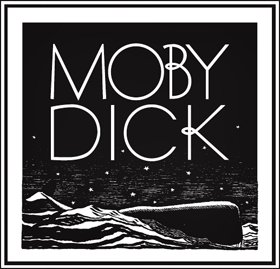Moby-Dick
dal 21/9/2009 al 11/12/2009
Segnalato da
Kenneth Anger
Matthew Benedict
Mark Bradford
Marcel Broodthaers
Angela Bulloch
Tom Burr
Tacita Dean
Marcel Dzama
Ellen Gallagher
Edgar Cleijne
Felix Gonzalez-Torres
Rodney Graham
John Gutmann
Susan Hiller
Evan Holloway
Peter Hutton
Colter Jacobsen
Brian Jungen
Buster Keaton
Rockwell Kent
Mateo Lopez
Jorge Macchi
Kris Martin
Henrik Olesen
Paulina Olowska
Damian Ortega
Jean Painleve'
Kirsten Pieroth
Richard Serra
Andreas Slominski
Hiroshi Sugimoto
Adrian Villar Rojas
Orson Welles
21/9/2009
Moby-Dick
CCA Wattis Institute for Contemporary Arts, San Francisco
An eclectic group of 32 international artists, including Damian Ortega, Angela Bulloch, Paulina Olowska, Richard Serra, Kenneth Anger, Matthew Benedict, Mark Bradford, Marcel Broodthaers, Tacita Dean, Jorge Macchi, Kris Martin, and Marcel Dzama, working across multiple media, from sculpture to film, video, drawing, and photography, present works related to Herman Melville's epic novel. The exhibition is the second show in a trilogy that are based on canonical American novels; it will also feature numerous historical artifacts and documents.

Moby-Dick is the second show in a trilogy of Wattis Institute exhibitions that are based on canonical American novels. The first, The Wizard of Oz, was presented in fall 2008; the third will be Huckleberry Finn, in fall 2010. All three stories have major themes related to exploration and (self-)discovery, and the corresponding exhibitions function as metaphorical journeys through which the audience experiences various notions of America's reality, both contemporary and historic. Established and emerging contemporary artists from around the world are invited to address the key themes of the books and the historical moments in which they were written. Many of the artists create new commissions specifically for the shows.
This investigation of America and its realities through the lens of literature by means of artworks, artifacts, and historical documents is unique to the Wattis Institute. Moby-Dick will encompass a wide range of works, including sculpture, film, video, drawing, and photography.
Participating Artists:
Kenneth Anger, Matthew Benedict, Mark Bradford, Marcel Broodthaers, Angela Bulloch, Tom Burr, Tacita Dean, Marcel Dzama, Ellen Gallagher and Edgar Cleijne, Felix Gonzalez-Torres, Rodney Graham, John Gutmann, Susan Hiller, Evan Holloway, Peter Hutton, Colter Jacobsen, Brian Jungen, Buster Keaton, Rockwell Kent, Mateo Lopez, Jorge Macchi, Kris Martin, Henrik Olesen, Paulina Olowska, Damián Ortega, Jean Painlevé, Kirsten Pieroth, Richard Serra, Andreas Slominski, Hiroshi Sugimoto, Adrián Villar Rojas, Orson Welles
Herman Melville's epic novel Moby-Dick, first published in 1851, is one the most mythologized American stories. From its famous opening line, "Call me Ishmael," the tale of Captain Ahab's obsessive pursuit of the whale Moby-Dick is as familiar as Dorothy and her travels to the Land of Oz, although Melville's book is less widely read and perhaps more multifaceted than L. Frank Baum's. Moby-Dick is notable, and sometimes criticized, for its convoluted narrative, complex structural devices, and lengthy passages devoted to the mundane details of the whaling industry. Despite its mixed reception upon publication, however, it has become firmly entrenched in the popular psyche and the canon of American literature.
Moby-Dick is based on Melville's own experiences at sea, particularly the months he spent in 1841–42 on the whaling ship Acushnet. It is also believed to be influenced by contemporary accounts of the sinking of the Essex, a Nantucket whaling ship destroyed in 1820 by a sperm whale off the coast of South America, and the killing of the white sperm whale Mocha Dick in the late 1830s. In the novel, Ishmael narrates his voyage on the Pequod, commanded by Captain Ahab, who is relentlessly pursuing Moby-Dick. During a previous encounter the whale had destroyed Ahab's boat and taken his leg. Ahab's failed quest for revenge, and the plight of his doomed crew (except Ishmael, who survives), is the primary narrative thread.
The novel's structure and the Wattis Institute's experimental curatorial approach have much in common. Both investigate how narrative and ideology, essential components of literature and curatorial practice alike, are conveyed. They are also analogous in their examination of the relationships between reader and narrator, audience and curator/artist.
In addition to the featured artworks, the exhibition will include a large display of the well-known illustrations by Rockwell Kent made for the 1930 Lakeside Press edition of Moby-Dick and various 19th-century whaling artifacts such as harpoons, scrimshaw, and maps. Together these components will reflect the novel's myriad themes and issues, including religion and faith; obsession, death, and defeat; race, class, and social status; friendship; homosexuality; absurdity (in both characters and ambitions); naive utopias; and, of course, humanity and humor.
Support for Moby-Dick provided by the Capital Group Companies Charitable Foundation. Additional support provided by the Consulate General of the Netherlands; Mondriaan Foundation, Amsterdam; and the British Council.
Founding support for CCA Wattis Institute for Contemporary Arts programs has been provided by Phyllis C. Wattis and Judy and Bill Timken. Generous support provided by the Phyllis C. Wattis Foundation, Grants for the Arts / San Francisco Hotel Tax Fund, Ann Hatch and Paul Discoe, and the CCA Curator's Forum.
Opening Reception Tuesday, September 22, 6:30–8:30 pm
Press Contacts
Brenda Tucker Director of Public Relations btucker@cca.edu 415.703.9548
CCA Wattis Institute for Contemporary Arts
1111 Eighth Street - San Francisco
Logan Galleries, San Francisco campus
Gallery hours: Tues. and Thurs., 11 a.m.–7 p.m.; Wed., Fri., and Sat., 11 a.m.–6 p.m.
Admission free



